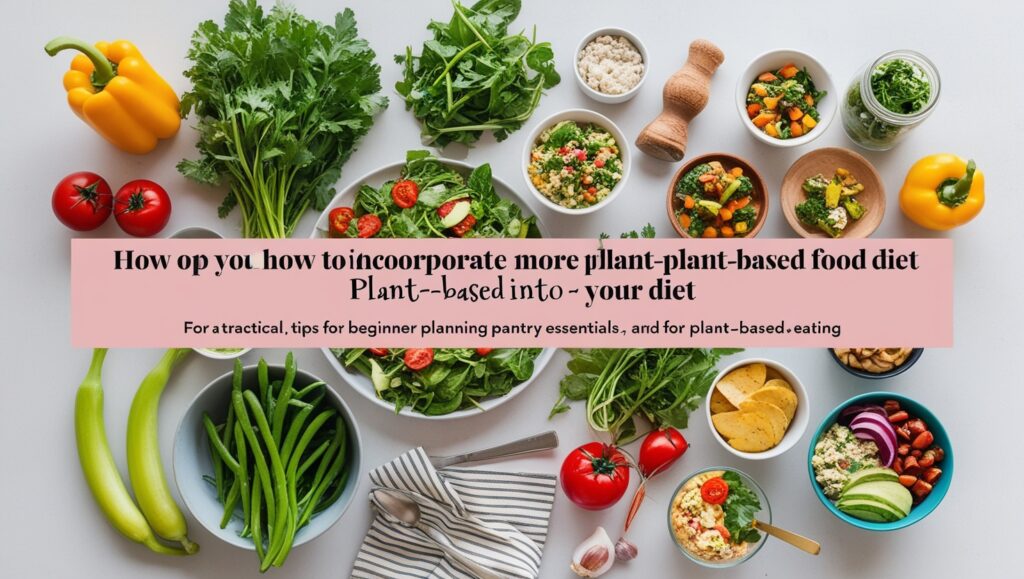How to Incorporate More Plant Based Foods into Your Diet
Adopting a plant-based diet is more than just a trend; it’s a lifestyle choice that can bring numerous health benefits, support environmental sustainability, and promote animal welfare. However, for many, transitioning to a diet that includes more fruits, vegetables, legumes, grains, nuts, and seeds can seem daunting. Whether you’re looking to go fully plant-based or simply want to include more plant-derived meals into your weekly rotation, making the shift doesn’t have to be overwhelming. Here’s a step-by-step guide to help you incorporate more plant-based foods into your diet smoothly and effectively.
1. Start with What You Know and Love
A great way to begin incorporating more plant-based foods is to build on the meals you already enjoy. If you like pasta dishes, try swapping out traditional meat-based sauces for tomato and vegetable-based sauces or lentil Bolognese. If you love tacos, create a filling with black beans, roasted vegetables, and avocado. By starting with familiar recipes, you make the change more approachable and enjoyable.
2. Embrace Meatless Mondays (or Any Day of the Week)
Commit to a specific day each week to go entirely plant-based. “Meatless Mondays” have become popular for a reason—they offer a manageable way to experiment with new recipes and build confidence in preparing plant-based meals. As you become more comfortable, you can increase the number of days you include plant-based meals.
3. Stock Your Pantry with Plant-Based Staples
Having a well-stocked pantry makes it easier to whip up a plant-based meal without much hassle. Some essential pantry items to consider include:
- Legumes: Beans, lentils, chickpeas
- Whole Grains: Brown rice, quinoa, oats, whole wheat pasta
- Nuts and Seeds: Almonds, chia seeds, flaxseeds, sunflower seeds
- Plant-Based Proteins: Tofu, tempeh, edamame, seitan
- Dairy Alternatives: Almond milk, oat milk, soy yogurt, coconut cream
- Canned Goods: Canned tomatoes, coconut milk, and beans for quick meal prep
These ingredients form the backbone of many plant-based recipes and provide necessary nutrients like protein, fiber, and healthy fats.
4. Get Creative with Vegetables
Vegetables are the stars of a plant-based diet, but they don’t have to be boring. Experiment with different cooking methods such as roasting, grilling, steaming, and stir-frying to bring out unique flavors and textures. Try adding roasted sweet potatoes to salads, grilling eggplants for sandwiches, or steaming broccoli and serving it with a rich tahini dressing.
5. Experiment with Plant-Based Proteins
One of the main concerns for those transitioning to a plant-based diet is how to get enough protein. The good news is that there are plenty of plant-based protein sources. Tofu and tempeh are versatile options that can take on a variety of flavors. Legumes such as lentils and chickpeas are rich in protein and fiber and can be used in soups, salads, and stews. Don’t forget about quinoa and amaranth, which are both protein-packed grains.
6. Incorporate Plant-Based Swaps
Sometimes, all it takes to transform a meal is a simple swap. Replace cow’s milk with almond or oat milk, use coconut oil instead of butter, or opt for plant-based cheeses when making pizza or sandwiches.
7. Plan and Prep Your Meals
Meal planning and prep can make a significant difference in sticking to your goal of eating more plant-based foods. Plan your meals for the week, batch-cook recipes like vegetable soups, lentil stews, or grain bowls, and store them for easy access throughout the week.
8. Try New Recipes
Adding variety is key to sustaining any diet. Explore new recipes and experiment with international cuisines known for their plant-based meals, such as Mediterranean dishes full of vegetables, legumes, and olive oil or Asian recipes that use tofu, rice, and stir-fried vegetables.
9. Supplement Wisely
While a well-rounded plant-based diet can provide most of the nutrients you need, it’s important to be mindful of specific nutrients like vitamin B12, iron, and omega-3 fatty acids. Consider taking supplements or eating fortified foods if necessary, especially for B12, which is not naturally found in plants.
10. Listen to Your Body and Adjust
Transitioning to a plant-based diet should be a gradual and enjoyable process. Listen to how your body responds to different foods and adjust your diet as needed. Some people may thrive on a fully plant-based diet, while others might prefer a more flexible approach. The key is to make changes that align with your health goals and lifestyle.
Final Thoughts
Incorporating more plant-based foods into your diet doesn’t have to be a dramatic shift. By taking small, manageable steps, such as trying new recipes, swapping ingredients, and planning meals, you can create a healthier and more sustainable eating routine. Every plant-based meal you enjoy is a step toward improved health and a greener planet. So start experimenting, have fun in the kitchen, and enjoy the journey toward a more plant-based lifestyle.
Follow Us on: FACEBOOK | TWITTER


